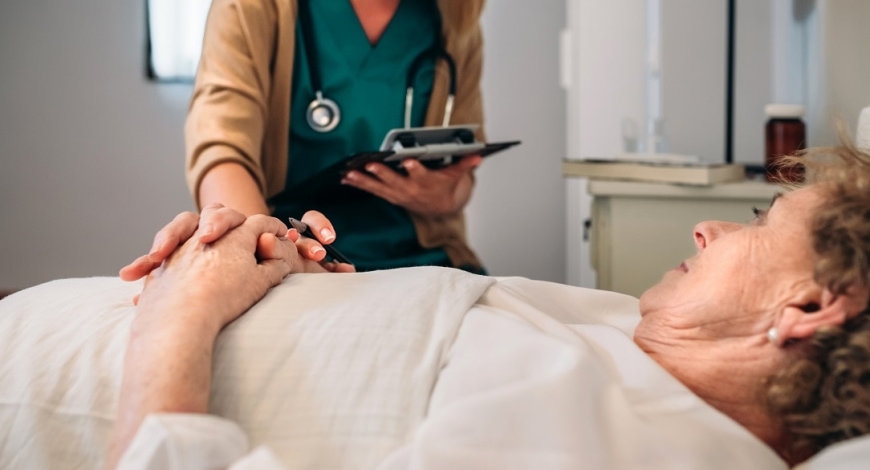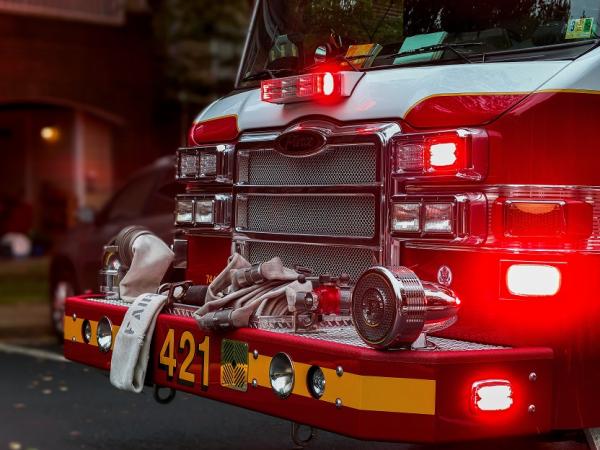Hospice in Home Care: A Nurse's Perspective

“Everyone wants to be the sun to lighten up everyone’s life, but why not be the moon, to brighten in the darkest hour.” – Unknown
I started my healthcare journey wanting to be the Sun. For me that was found in emergency medicine. Nothing ever came close to the rush of adrenaline I felt hearing the fire department’s tone sound over the pager. My mind and heart raced. What scene was dispatch sending me to? Car accident? Grass fire? Fall induced trauma? The elusive, pulse less-non-breather? The PNB is what I lived for. It was my opportunity to come in, conduct effective cardiopulmonary resuscitation, and save the day for my patient and their loved ones. Saving someone’s life is an indescribable feeling.
That made the emergency room the Holy Grail. Imagine, lifesaving. All day, every day. However, once you are submersed long enough, you would often see patients who would need very aggressive interventions. Families would want us to do any and everything to save them, even if it meant potentially decreasing their quality of life should they survive. It was these situations which weighed heaviest on me, so I found myself looking for a nursing position out of the hospital all together.
It wasn’t until I left the emergency room that I had my first encounter with Hospice. Honestly, I had many misconceptions about it. Like so many others, I had thought that hospice meant quitting. Giving up. The philosophy of hospice went against every fiber of my being as someone who has spent years in emergency nursing.

It wasn’t until I left the emergency room that I had my first encounter with Hospice. Honestly, I had many misconceptions about it.
I had been working at a skilled nursing facility for a few months before my first resident was admitted to hospice. I couldn’t understand why a family would elect hospice while in a facility. Surely the licensed staff could handle administering morphine and making phone calls after someone passed. We did these things for residents all the time.
I was working the weekend and one of the sweetest little ladies I have ever had the pleasure to care for had a significant decline in health. I had to call her hospice agency to update her nurse. The nurse came to assess her at the facility. While I was running around caring for my other 30 residents, the hospice nurse sat with her patient.
My morning med pass came and went and the hospice nurse was still bedside. My resident was nearing the end of her life quickly. Throughout the hospice nurse’s time at the facility, she had provided comfort and administered medications. She had called my resident’s family and others from hospice. Once the resident’s family arrived, the hospice chaplain and social worker arrived to further support the family. A certified nursing assistant also showed up to give a bed bath, even though that resident had already had one a day prior at our facility.
I entered the room to check on my resident and had walked in on a family discussion about starting IV fluids or sending my resident out for placement of a feeding tube to extend the time they had with their loved one. Months prior to this moment, I would have been in the ER getting IV access to start the fluids without a second thought. In that room, what I heard had changed my make up as a nurse. The hospice nurse had educated that family on disease process and end of life symptoms. The nurse explained to the family that sending their loved one out to the hospital at this point would cause more harm and distress and the interventions would not extend life. The family became very tearful, but they verbalized relief and expressed gratitude to the hospice nurse for making their most difficult time more understandable. The hospice nurse had become the Moon.
Now that I am in hospice, I cannot see myself anywhere else. Hospice is not just administering medications until someone dies and calling the funeral home, and it is most certainly not quitting. It is providing quality to someone’s days, when the quantity is no longer endless. It is educating the families so they can feel confident in being able to control observed symptoms themselves in the home. It is providing spiritual support. It is helping navigate legal forms and getting assistance from other resources for patients and families if needed. It is being able to be present. To provide one on one care, not having to worry about 30 other residents’ medications or treatments. It is being allowed to be with a family throughout their loved ones end of life journey, to hold the hand of the one who is passing. That is what makes the difficult times rewarding. That is what it is like to brighten in the darkest hours.
Contact Unity 24/7 if you have any questions or if you would like to join the Unity Team.
This blog post was shared by Erin N., a Registered Nurse at Unity Hospice.
If you found this information helpful, please share it with your network and community.






